
Wood Marsh embeds Lonsdale Links golf club in coastal landscape
Architecture studio Wood Marsh has completed a clubhouse facility for a golf course in Point Lonsdale, Australia, featuring blade-like concrete walls that emerge above the surrounding coastal dunes.
The Lonsdale Links golf club is located on the Bellarine Peninsula south of Melbourne, where its 18-hole links course is integrated among sand dunes, salt marshes and wetlands on the edge of Lake Victoria.
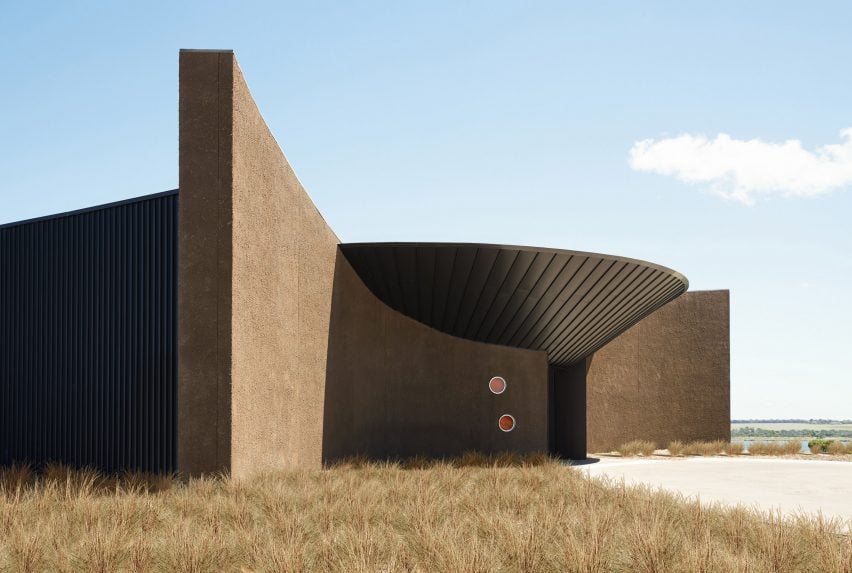
The clubhouse designed by local office Wood Marsh is positioned on the crest of a hill where it can be experienced from different sight lines, emerging above the trees as golfers navigate the course.
The building responds to the coastal climate by hunkering down into the site. Its curved blade walls are finished in a textured render that emphasises its robust construction and connection to the earth.
"Like ancient ruins, the softened contours of the building are meant to be embedded in the landscape, as though it has been there for a long time and will be for years to come," claimed Wood Marsh director Roger Wood.
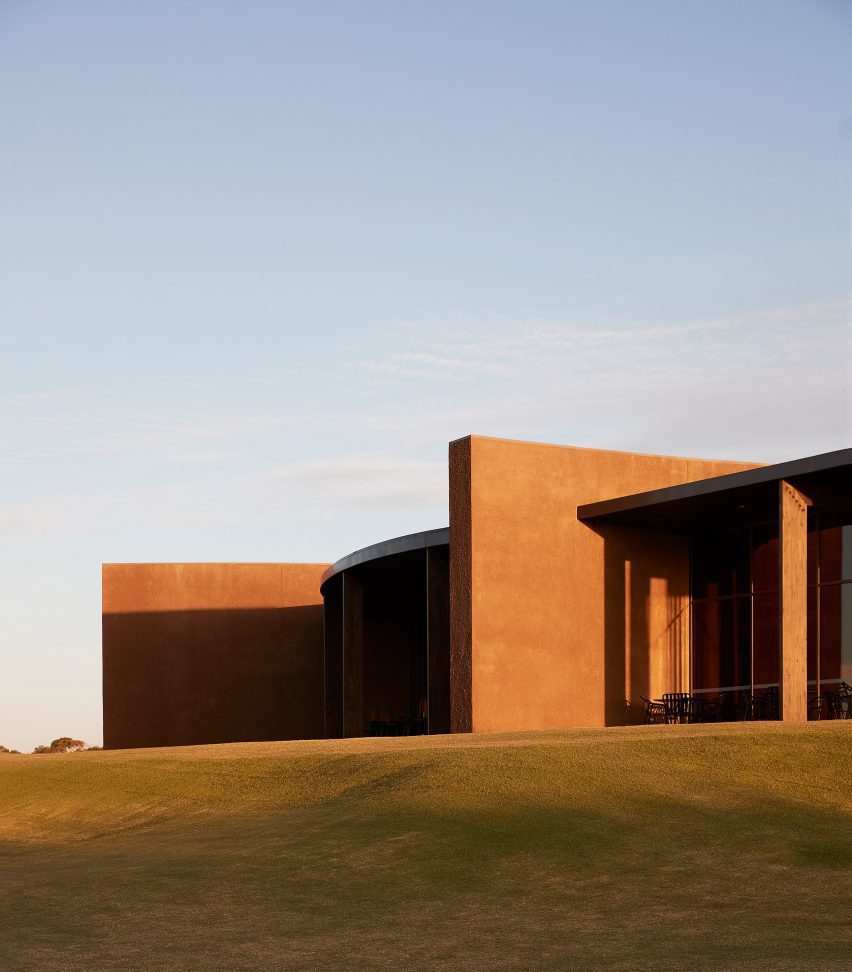
Materials used across the building's exterior feature raw, weathered finishes that are appropriate to the coastal setting. The brown rendered walls and dark wood are complemented by bronze glazing that reflects the evening light.
The textured walls and dark-stained laminated structural elements that radiate outwards from the building's spine help to accentuate its non-rectilinear form.
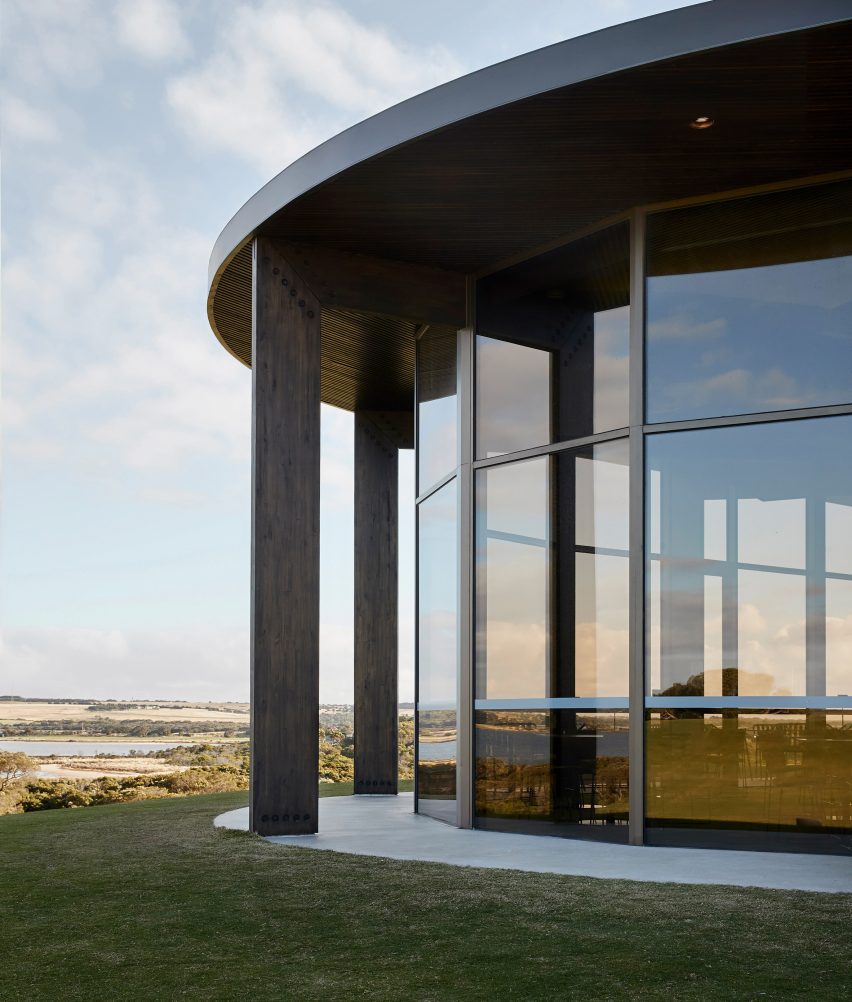
Two of the curving walls frame the entrance to the clubhouse and hide the majority of the building's mass from view on the approach.
A dish-shaped zinc roof extends over the threshold, which is flanked by four circular orange lights.
"The curving canopy of the entry has a funnelling effect," Wood added. "Likewise, the substantial walls curve from either side towards the front doors. Where the directionality of the curving walls meets the belly of the canopy the building effectively compresses to draw in visitors."
Inside, a circular vestibule connects with a timber-lined corridor that leads guests toward the restaurant and golfers' lounge.
These spaces wrap around the northern and western sides of the building, providing views across the lake, the golf course and the landscape through full-height windows.
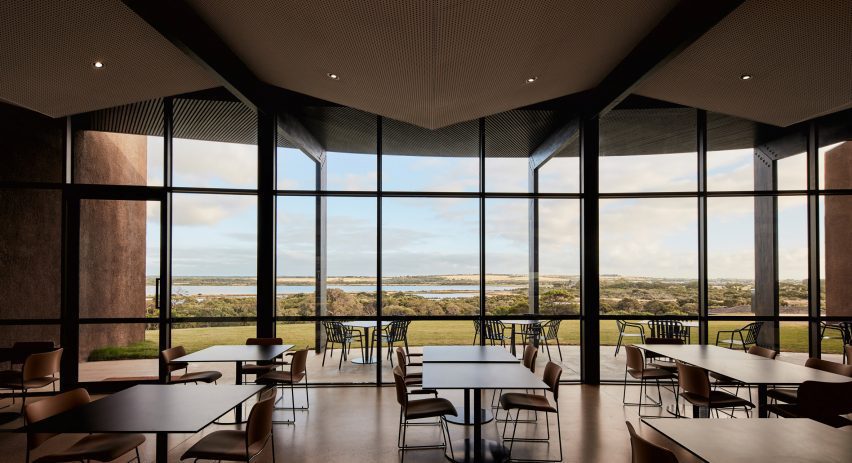
At the opposite end of the corridor from the entrance is a wall made from stacked dry stones. The monolithic element incorporates a fireplace on its reverse side that forms a focal point for the club lounge.
Laminated timber beams and folded acoustic ceiling panels radiate out from the centrally positioned stone wall, drawing the eye out towards the natural surroundings.
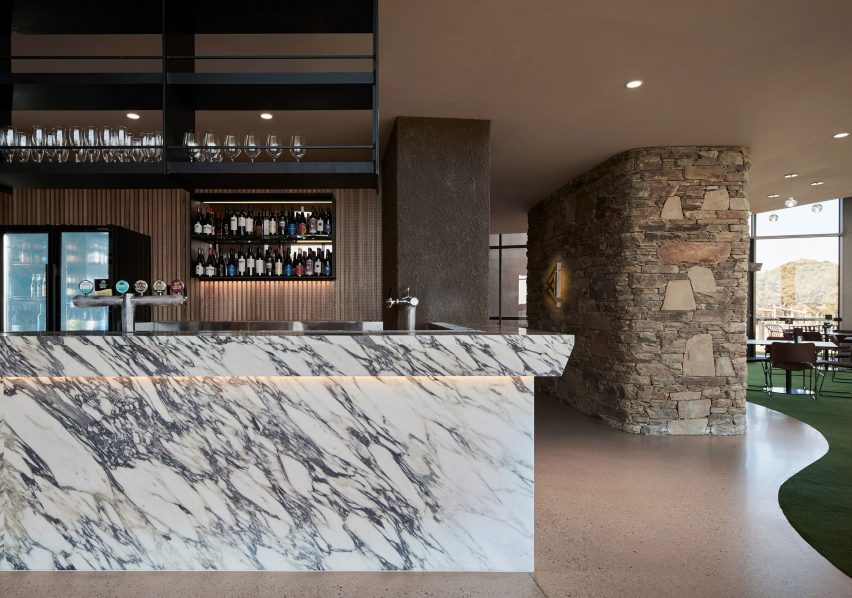
The lounge and restaurant feature a vibrant green carpet with curved edges that playfully evokes the golf course's fairways.
Marble surfaces used for the bar counter and surfaces in the bathrooms add a further natural element to the refined material palette.
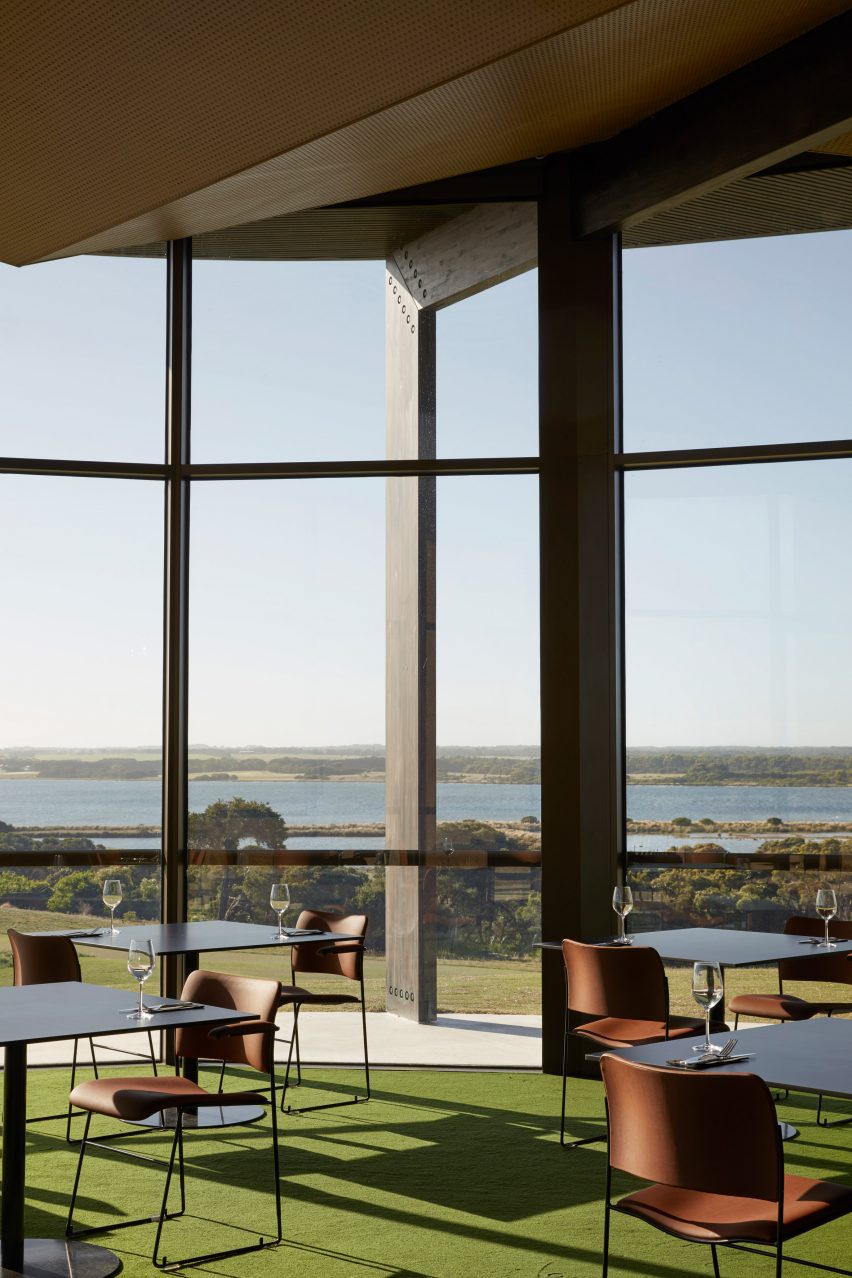
Roger Wood and Randal Marsh established their practice in 1983, and have maintained a consistent focus on creating buildings with a sculptural quality that play on the combination of solidity and transparency while utilising limited material palettes.
The studio's previous projects include a surf club that emerges from sand dunes along the coast from the Lonsdale Links golf club, as well as a sculptural house in Melbourne with curving concrete walls and a disc-shaped roof.
The photography is by Willem-Dirk du Toit.